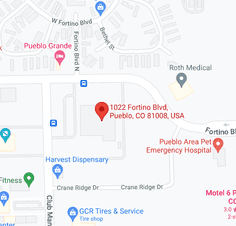Micro-Grid Energy Systems
What is a Micro-Grid
What is a Micro-Grid?
A micro-grid is an innovative energy system that operates independently or in conjunction with the main power grid. It is a localized power distribution network that generates, stores, and manages electricity on a smaller scale. Unlike traditional centralized power grids, micro-grids offer several advantages in terms of reliability, efficiency, and sustainability.
The Importance of Micro-Grids
Reliability
One of the key benefits of micro-grids is their ability to provide reliable power supply, especially in remote or off-grid areas. By utilizing a combination of renewable energy sources, such as solar panels, wind turbines, or even small-scale hydroelectric generators, micro-grids can ensure a constant and uninterrupted energy supply.
Energy Efficiency
Micro-grids are designed to optimize energy efficiency by minimizing transmission losses. In traditional power grids, electricity travels long distances from centralized power plants to end-users, resulting in significant energy losses along the way. However, with micro-grids, power generation and consumption occur in close proximity, reducing energy waste and improving overall efficiency.
Sustainability
With the increasing focus on sustainable energy solutions, micro-grids play a crucial role in promoting clean and renewable sources of power. By harnessing solar, wind, or other green energy options, micro-grids contribute to reducing greenhouse gas emissions and mitigating climate change. Additionally, they provide local communities with greater energy independence and resilience.
Components of a Micro-Grid
Generation
The generation component of a micro-grid comprises various renewable energy sources, such as solar panels, wind turbines, or even biomass generators. These sources convert natural resources into electrical energy, ensuring a sustainable and eco-friendly power supply.
Storage
To ensure a continuous power supply, micro-grids incorporate energy storage systems. These systems store excess energy generated during periods of low demand and release it during peak times or when renewable sources are temporarily unavailable. Common storage technologies include batteries, flywheels, or even pumped hydro storage.
Distribution and Control
The distribution and control component of a micro-grid involves managing the flow of electricity between various sources and consumers. Advanced control systems and smart grid technologies enable efficient monitoring, coordination, and optimization of power distribution within the micro-grid.
Benefits and Applications of Micro-Grids
Rural Electrification
Micro-grids are instrumental in providing electricity to rural and remote areas where extending the main power grid is often economically or logistically challenging. By deploying micro-grids, communities can access clean and reliable energy, powering homes, schools, hospitals, and other essential facilities.
Resilience and Disaster Management
During natural disasters or grid failures, micro-grids can act as a reliable backup power source. They can operate independently, ensuring critical services like emergency response centers, communication networks, and healthcare facilities remain functional during challenging times.
Integration with Existing Grids
Micro-grids can also integrate with the main power grid, providing additional support and resilience to the overall energy infrastructure. By enabling two-way power flow, micro-grids can help balance the grid, manage peak demand, and incorporate more renewable energy sources into the existing system.
In conclusion, micro-grids are revolutionizing the way we generate, distribute, and consume electricity. With their numerous benefits, including reliability, energy efficiency, and sustainability, micro-grids are paving the way for a more resilient and sustainable energy future. By embracing this innovative technology, we can create a decentralized energy system that empowers communities and reduces our carbon footprint.



